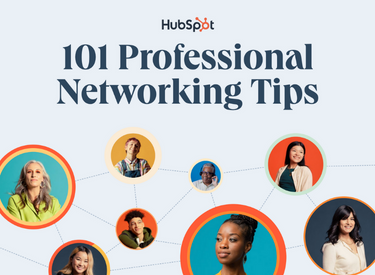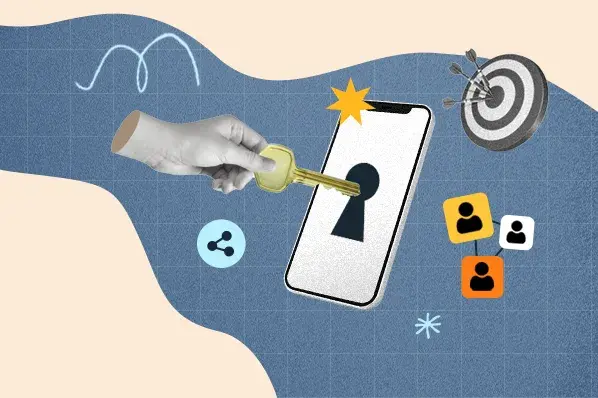- Network before job searching.
- Come prepared with a clear goal in mind.
- Have some conversation starters ready.
- Introduce yourself to someone more experienced.
- Ask people about themselves.
- Practice active listening.
- Write notes after each meaningful conversation.
- Ask for what you want.
- Exit a conversation gracefully.
- Follow up every time.
1. Network before job searching.
As anyone who has ever looked for a job can attest, the process can be daunting. Knowing who to reach out to can make all the difference.
One way to make the process a little easier is to start networking with people before you even begin looking for a job. That way, when the time comes, you will already have contacts to leverage.
Building relationships with people in your industry can help you to get your foot in the door, and it can also give you an inside look at what companies are hiring.
In addition, you can identify mentors who can provide guidance and support throughout your career.
2. Come prepared with a clear goal in mind.
Next time you're going to an event, ask yourself: “Who do I want to meet, and why?”
Certain event registration platforms will share attendee lists on the registration page. If a guest list like this is available, take a moment to scan it.
You might discover potential clients, mentors, or employees you want to connect with.
For instance, let's say you're the CMO of a successful lawn-mowing business and your goal is to leave the event with 10 leads.
Having a specific goal in mind will allow you to prepare effectively and keep you focused during networking events.
It will make your conversations less ambiguous and lead to better alignment with your connections.
3. Have some conversation starters ready.
Approaching a big or small group can be intimidating. With the right approach, you can join an existing conversation or start your own successfully.
Ease into the evening by introducing yourself to one person who is also flying solo and looking for someone to talk to.
Ahead of time, read up on industry news and trends so you’ll be prepared to spark conversation and ask for other people's thoughts on topics that are interesting to both of you.
Other great networking conversation starters include:
- What do you do for work?
- What brought you to this event?
- What do you think about the event so far?
- Are you familiar with any of the speakers?
Your first connection at an event is your gateway to meeting more people. Maybe they came with friends they can introduce you to, or maybe you'll decide to break into bigger groups together.
Whoever you approach first, relieve some of the awkwardness with informed, relevant conversation starters to get in the swing of things together.
Once your first conversation goes smoothly, it’ll give you the confidence to interact with others.
4. Introduce yourself to someone more experienced.
We sometimes walk into networking events with high hopes of meeting the CEO of a company we admire, or the author of a book that kickstarted our career.
We're so thrilled to be in the same place as them, but suddenly, you spot them across the room and become nervous, awkward, and maybe a little bit sweaty.
So how can you successfully strike up a conversation?
First and foremost, make sure you have a purpose. Butting into their conversation to tell them you love their work or admire their approach will not invite stimulating conversation. It's more likely to evoke a simple "thank you."
Consider what it is about this person that resonated with you, and tie it into your work, projects, or philosophy.
Approach them with confidence, and introduce yourself not as a fan, but as an equal – because you are – and say something thought-provoking that they can relate to.
Like this: "Your application of inbound marketing for nonprofits was helpful for me at my last job, but I'm transitioning into a job in the pharmaceutical industry. Would you change your inbound marketing approach if you were me?"
Remember that you admire this person because you respect their thought leadership. Give them a chance to admire you, too, by sparking an interesting and relevant conversation.
5. Ask people questions about themselves.
Often, we meet someone and exchange our names, company, job title, and where we grew up in about three minutes. Then we smile, look at the ground, and say something like "I love your shirt."
When the small talk is up, it's easy for the conversation to go south.
I've learned to avoid this by making them the topic of conversation.
You may be thinking, how can I make connections if we just talk about them the whole time? Well, showing genuine interest in another person can say more about you than talking about yourself could.
Besides, if a person doesn't reciprocate the behavior and encourage you to tell them about yourself afterward, then they probably weren't a valuable connection to begin with.
Next time a conversation is flailing, ask for them to elaborate or tell you more about themselves and you'll find talking points you'll be able to expand on.
6. Practice active listening.
One of the biggest challenges of networking is learning how to actively listen to others.
When we're networking, we're often so focused on sharing that we might not take the time to really listen to the other person.
This is essential for building strong relationships – it shows that we're interested in what the other person has to say and that we're paying attention.
One way to practice active listening is to paraphrase the other person’s statement. This signals to the other person that we understand them and shows that we're engaged in the conversation.
Another technique is asking questions, which shows a genuine interest in others and invites them to keep engaging in conversation.
Active listening is a key skill for networking and will build the foundation for strong and productive relationships.
7. Write notes after each meaningful conversation.
Have you ever been in a situation where you meet someone new, have a great conversation, and then forget their name when you go to follow up?
It happens to the best of us, but there is a solution: write a personal note after each meaningful conversation.
This doesn't have to be anything formal, just a few quick sentences about who the person is and what you talked about. That way, when you go to follow up, you'll have all the information you need right at your fingertips.
Not only will this make you look more professional, but it will also help you build stronger relationships with the people you meet.
8. Ask for what you want.
The highlight of networking events we all fantasize about is leaving with a concrete exchange that will move our business or career forward. Maybe it's a job offer, getting an investor on board, locking down a recommendation letter, or landing a client you've been after for months.
Whatever the highlight, it isn't going to fall in our lap. We can play all the right cards to set us up for the big moment, but a time will come when we need to put ourselves out there and firmly express what we want.
The question is, how should you do this without coming across as aggressive?
Consider your answer to the classic job interview question "Why should we hire you over the other candidates?" You come up with a true, succinct, humble, and exemplary answer of why you're the right person for the job.
Your approach to getting what you want from networking isn't all that different, except it's important to express your flexibility.
This combination of flexibility and confidence in getting the job done is a brilliant way to frame your next big ask: Be firm on what you want, but present it in a way that highlights the benefits for your listener.
9. Exit a conversation gracefully.
It's important to remember that networking isn't like speed-dating. The goal isn't to meet as many people as you can – it's to make valuable connections.
While it's important not to rush through conversations for this reason, there are times when we need to jump ship. Whether you're chatting with someone who won't let you get a word in, or someone who is wasting time whining about their boss, you should still be polite when ending the conversation.
If there’s a lull in the conversation, say “Please let me know how that project goes, I’d love to see it and hear how it turns out.” This will show you were engaged, and though it ends the conversation in the moment, they won’t feel offended.
Alternatively, consider asking them "Have you seen anyone from [company name] tonight? I've been meaning to chat with them." This will kindly express that it's important to you to expand your network.
10. Follow up every time.
Networking can be a great way to make professional connections, but it's only effective if you follow up. After all, exchanging business cards is only the first step in building a relationship.
If you want to make a lasting impression, you need to take the time to follow up with the people you meet.
So how do you follow up effectively? First, send a personalized email or LinkedIn message within 24 hours of meeting someone. This shows that you're interested in keeping in touch.
Second, invite the person you met to coffee or lunch so you can further connect. After that, it’s just a matter of staying in touch by sending occasional emails, reaching out via social media, or meeting up.
Plan on attending a networking event soon? Leave awkwardness at the door by walking in with full confidence. Use the tips and remember: The outcome of the evening is up to you.
Editor's Note: This post was originally published in Aug. 2019 and has been updated for comprehensiveness.
Networking







-Aug-02-2022-04-31-24-05-PM.png)

